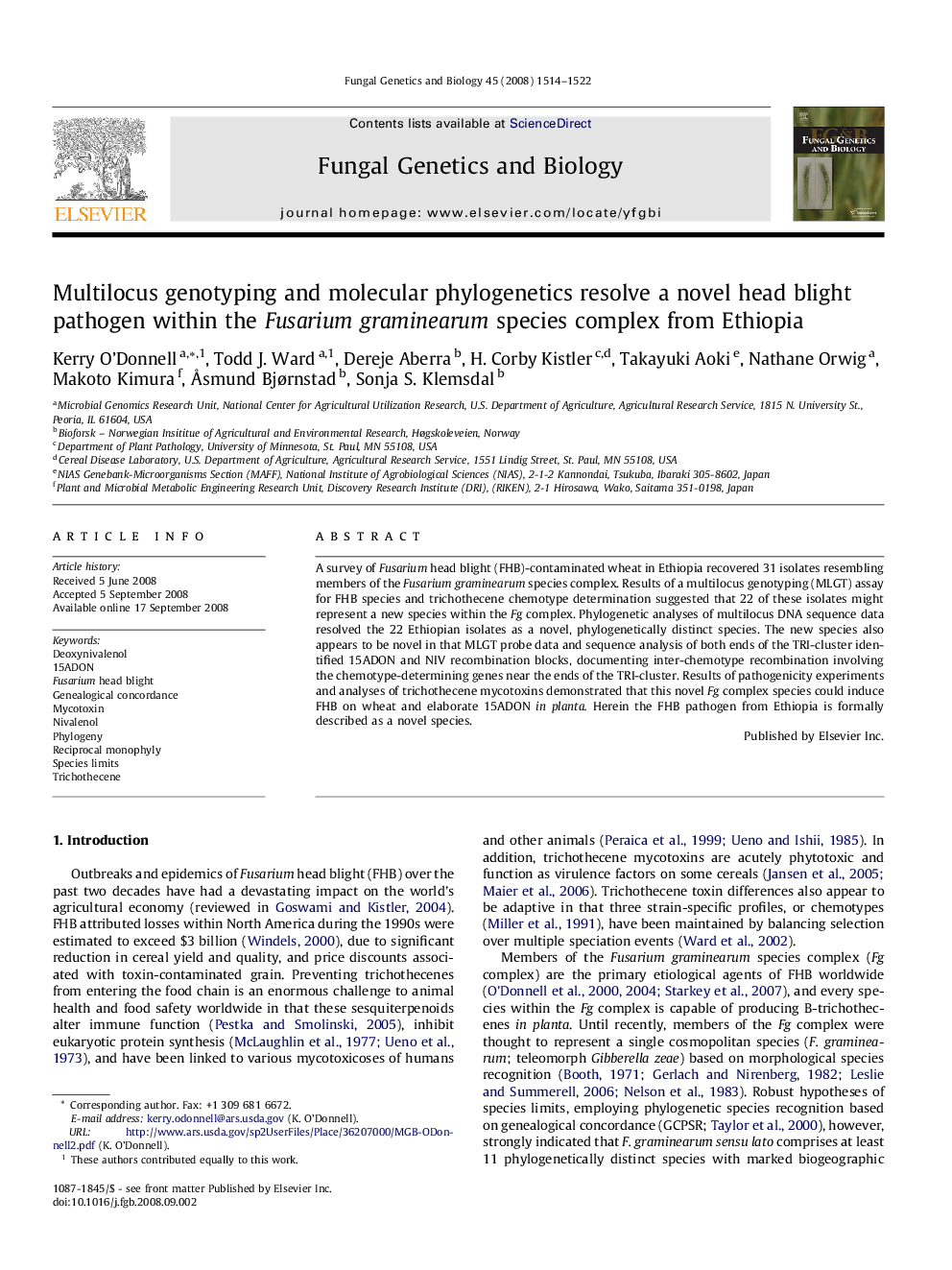| Article ID | Journal | Published Year | Pages | File Type |
|---|---|---|---|---|
| 2181396 | Fungal Genetics and Biology | 2008 | 9 Pages |
A survey of Fusarium head blight (FHB)-contaminated wheat in Ethiopia recovered 31 isolates resembling members of the Fusarium graminearum species complex. Results of a multilocus genotyping (MLGT) assay for FHB species and trichothecene chemotype determination suggested that 22 of these isolates might represent a new species within the Fg complex. Phylogenetic analyses of multilocus DNA sequence data resolved the 22 Ethiopian isolates as a novel, phylogenetically distinct species. The new species also appears to be novel in that MLGT probe data and sequence analysis of both ends of the TRI-cluster identified 15ADON and NIV recombination blocks, documenting inter-chemotype recombination involving the chemotype-determining genes near the ends of the TRI-cluster. Results of pathogenicity experiments and analyses of trichothecene mycotoxins demonstrated that this novel Fg complex species could induce FHB on wheat and elaborate 15ADON in planta. Herein the FHB pathogen from Ethiopia is formally described as a novel species.
